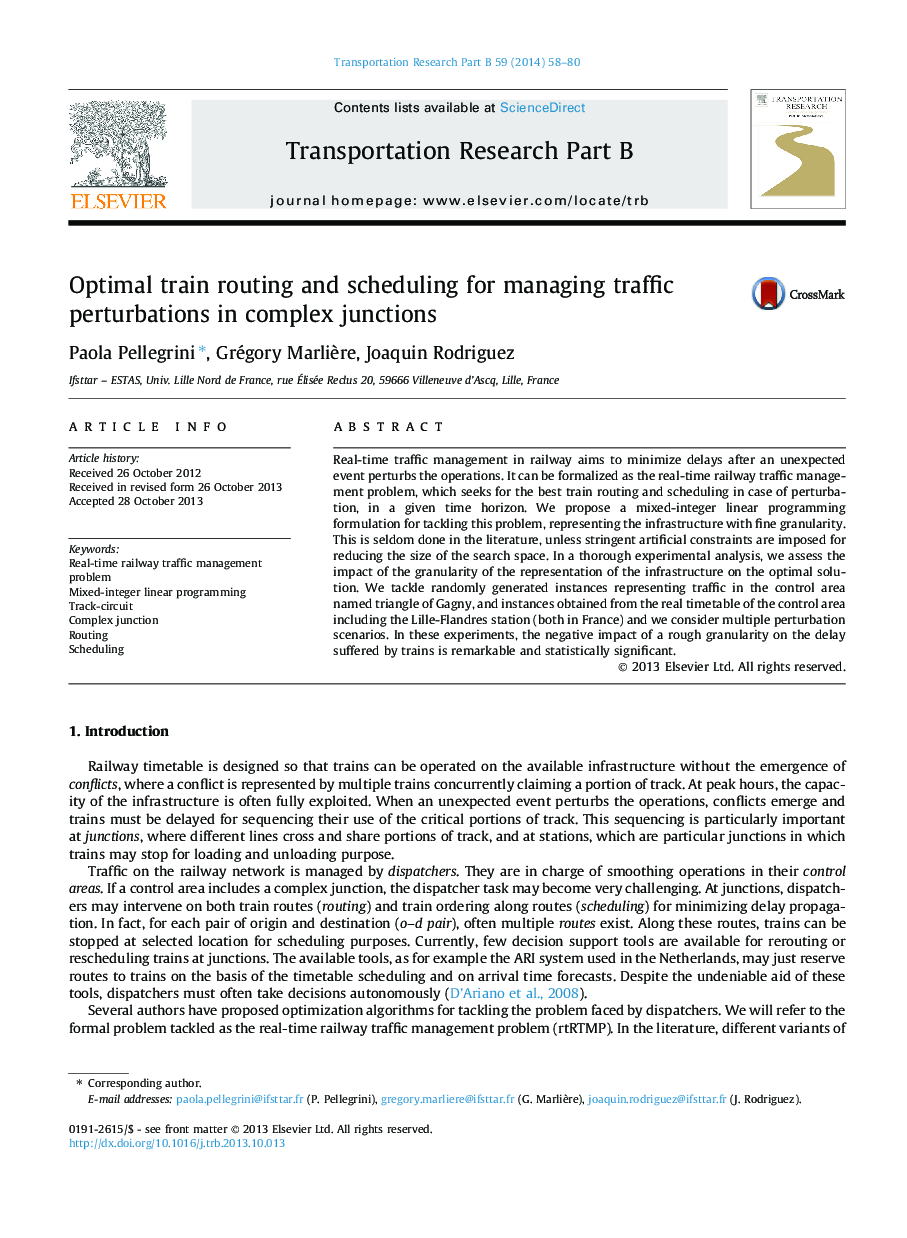| Article ID | Journal | Published Year | Pages | File Type |
|---|---|---|---|---|
| 1132090 | Transportation Research Part B: Methodological | 2014 | 23 Pages |
•We propose a MILP formulation for the real-time traffic management problem.•It tackles instances where the infrastructure is modeled with fine granularity.•It can be included in a rolling-horizon framework.•We quantify the impact of the granularity of the representation on delay propagation.•The formulation has very good performance in terms of computational time.
Real-time traffic management in railway aims to minimize delays after an unexpected event perturbs the operations. It can be formalized as the real-time railway traffic management problem, which seeks for the best train routing and scheduling in case of perturbation, in a given time horizon. We propose a mixed-integer linear programming formulation for tackling this problem, representing the infrastructure with fine granularity. This is seldom done in the literature, unless stringent artificial constraints are imposed for reducing the size of the search space. In a thorough experimental analysis, we assess the impact of the granularity of the representation of the infrastructure on the optimal solution. We tackle randomly generated instances representing traffic in the control area named triangle of Gagny, and instances obtained from the real timetable of the control area including the Lille-Flandres station (both in France) and we consider multiple perturbation scenarios. In these experiments, the negative impact of a rough granularity on the delay suffered by trains is remarkable and statistically significant.
